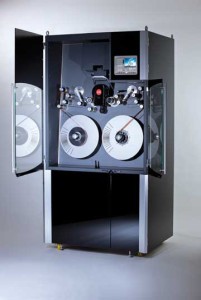
Digital Film Technology announced a major sale to the National Film and Sound Archive of Australia (NFSA). The NFSA has acquired DFT’s new motion picture film scanner SCANITY, for the digitization of its extensive holdings of 16mm film in the national audiovisual collection. This new equipment will add to the NFSA’s existing capability for scanning small-gauge film. The national audiovisual collection holds 91,000 16mm titles.
“16mm film, once a format to liberate filmmakers from the confines of industrial production and the first democratic distribution medium, has become the poor cousin of legacy formats,” said Michael Loebenstein, CEO of the NFSA. “As the stewards of the Australian screen heritage, NFSA makes a substantial investment in the future accessibility of an important part of our collective audiovisual memory. The timing is fortunate, as in 2013 we celebrate the centenary of Film Australia and Australian documentary film – a legacy that to a great extent survives in the 16mm format.”
Scanning 16mm material is a key element in a long-term preservation strategy. Scanned materials are not discarded. They continue to be preserved in their physical formats, in optimized cool storage.
The SCANITY scanner selected by the NFSA is being supplied via Future Reality Ltd, Australia, following a tender process and an extensive period of research and market-testing. The selection criteria included the ability to handle fragile, shrunken film and efficient scanning of soundtracks and images at high resolution – all crucial requirements for archival digitization.
“SCANITY will greatly enhance the film ingest capability for the NFSA’s aging collection, preserving the true value of this historical content for future generations,” said Simon Carter, sales director for Digital Film Technology. “Delivering high-quality data capture from archival 16mm material is fraught with a range of complex considerations; predominantly physical damage like dust, abrasions and shrinkage, which can only be managed by the correct technology. The real-time SCANITY is designed specifically to handle just these concerns and deliver the best possible 2K or 4K data files in a fast and yet controlled manner.”
“The DFT SCANITY performs very well in the gentle handling of fragile, shrunken film and efficient scanning of soundtracks and images at high resolution,” said Ian Gilmour, head of technology strategies at the NFSA.
“This scanning equipment will also potentially increase the NFSA’s capability to support digital screenings of the national collection at both the NFSA’s Arc Cinema in Canberra and its regional touring screening programs, and offers new opportunities for restoring and re-releasing historical titles for the broadcast, home entertainment and broadband markets,” Loebenstein said. “The implementation of 16mm digital workflows also moves us further towards future support for the digitization of 35mm film.”





